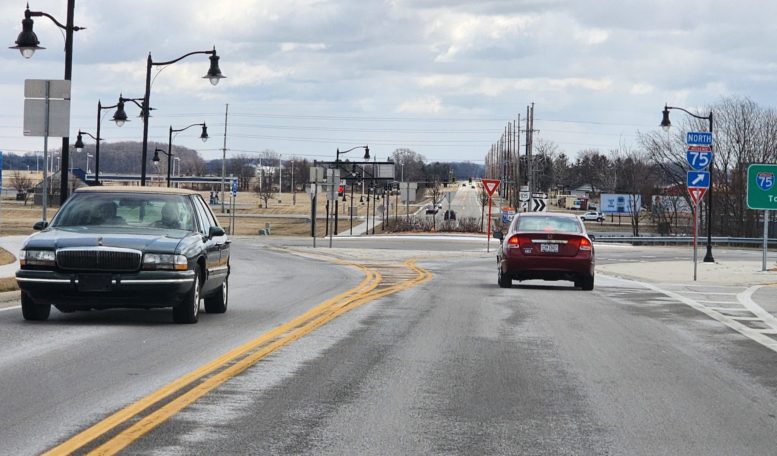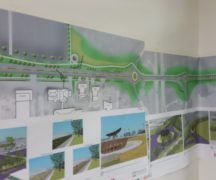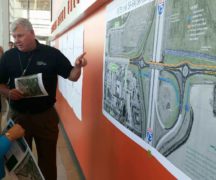By JAN LARSON McLAUGHLIN
BG Independent News
Despite predictions of “carmageddon” by some local motorists, Bowling Green drivers have adapted well to roundabouts, according to city officials.
This week, the construction of the next roundabout will begin.
The first two roundabouts were opened in 2019 at the northbound and southbound interchanges of Interstate 75 and East Wooster Street. And last fall, the county finished construction of a roundabout on the east edge of Bowling Green, at Campbell Hill and Napoleon roads.
The roundabouts have reduced the number of serious crashes at the I-75 interchanges, according to Bowling Green Police Division statistics.
In 2022 and 2023 so far, the police division has responded to 10 crashes at the roundabouts, according to Lt. Adam Skaff. While it’s not known exactly how that number compares to the number of crashes there prior to the roundabouts, Skaff is certain the severity of the crashes is far different now.
“You essentially eliminate someone running a red light and T-boning someone at 40 mph. Crashes that occur inside the roundabout tend to be slow speed, more minor crashes,” Skaff said. “It’s really hard to get in a serious crash while you’re going 10 mph.”
“All the statistics say they are safer,” he said.
Skaff said motorists in Bowling Green appear to be getting used to roundabouts.
“The more people navigate it, the more they get used to it,” Skaff said.
But now, with the announcement of construction of yet another roundabout – this one with two lanes of travel at East Wooster Street and Campbell Hill Road – to begin on Monday (March 20), some motorists suggested the city put the brakes on more roundabouts. On Facebook, some are questioning the wisdom of adding more, stating that drivers don’t know how to use the existing one-lane roundabouts. Some say there is too much traffic there for a roundabout – while others say there is not enough traffic to make it necessary.
City officials are counting the statistics about roundabout safety to hold true for this new roundabout as well. According to the Ohio Department of Transportation:
- Roundabouts have eight potential conflict points versus 32 at a traditional intersection. Studies by the Federal Highway Administration show that roundabouts achieve a 44% reduction in crashes and reduce serious injury and deadly crashes by nearly 90% at two-way stop intersections. When roundabouts replace a traffic signal, the FHWA found a 48% reduction in crashes and nearly 80% drop in serious injury and deadly crashes.
- Roundabouts can move traffic more efficiently which reduces delays and fuel consumption. This is because traffic generally doesn’t need to come to a full stop at the intersection.
- Roundabouts typically aren’t the most popular solution with the public. Much of that is due to a lack of education about their benefits and them being a relatively new traffic pattern for many areas of Ohio. Public reaction usually flips to positive within a year or two of them being installed and open to traffic.
Bowling Green officials have plans for two more roundabouts – one at the entrance to Woodbridge Business Park on Dunbridge Road, and another at the intersection of Brim and Bishop roads.
According to BG Public Services Director Joe Fawcett, funding has been secured for the Brim-Bishop roundabout from the Toledo Metropolitan Area Council of Governments. That project is planned for 2028.
Beginning Monday, initial work on the East Wooster-Campbell Hill roundabout will include replacing the water line within the footprint of the roundabout and then will proceed with the roundabout construction. Access to businesses and one lane of traffic in each direction will be maintained throughout the duration of the project.
The city will also construct a decorative median island between the newly built roundabout and the existing roundabouts at I-75. The entire project is anticipated to be complete by Aug. 1.
The city website explains the main rules for roundabouts – Look to your left as you near the entrance to the roundabout. Yield to traffic already in the roundabout. Once you see a gap in traffic, enter the circle and proceed to your exit. If there is no traffic in the roundabout, you may enter without yielding.




